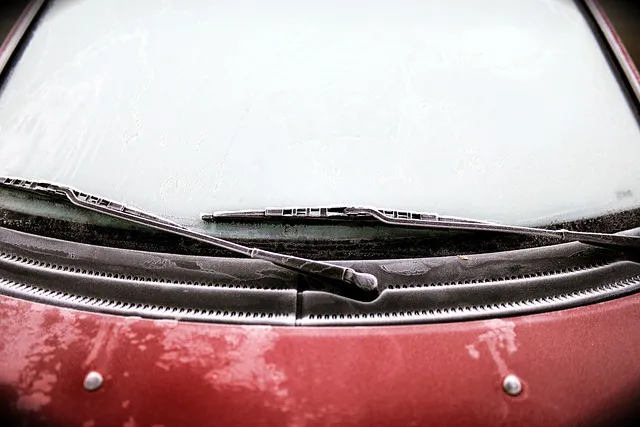By Michael Toth editor at yorkshiredales.co.uk
The Tale of Two Drivers: A Cautionary Comedy
Let me tell you a tale of two drivers: Prepared Pete and Last-Minute Larry.
Pete is the kind of guy who starts prepping his car for winter while it’s still T-shirt weather. He reads articles like this one, changes his windshield wipers religiously, and keeps a color-coded emergency kit in his trunk, complete with protein bars and a deck of Uno for morale.
Larry, on the other hand, is an optimist—one of those folks who believes snow is just a conspiracy theory invented by tyre companies. When winter hits, Larry’s driving a bald-tyred Corolla with a battery that wheezes like a 90-year-old smoker. His emergency kit? Half a granola bar and a pair of mismatched gloves he found in the glove box. Last year, Larry used his windshield scraper as a spatula at a barbecue and never replaced it.
Cue the first snowstorm of the season. Pete cruises by confidently in his winter-ready Subaru, sipping a mug of coffee, while Larry’s stranded in a parking lot, defrosting his windshield with a credit card and yelling at a squirrel for “giving him attitude.”
Don’t be Larry. Be Pete.
1. Battery: The Unsung Hero (or Villain) of Winter Mornings
Cold temperatures can drain your car’s battery faster than a toddler drains your energy. A weak battery that starts fine in October might leave you begging for a jump in December. Have your battery tested before winter really sets in—most auto parts stores will do this for free. Look for corrosion on the terminals (those fluffy green or white crystals aren’t festive—they’re trouble) and clean it off with a mixture of baking soda and water.
If your battery is over 3–4 years old, consider replacing it. Think of it as life insurance for your commute.
2. Winter Tyres: Because All-Season Is a Lie
All-season tyres are like flip-flops with a hoodie—not suited for serious winter business. Winter tyres are made from a softer rubber that stays flexible in freezing temps, and their deep treads grip snowy roads like a mouse in a play wheel.
If you live anywhere north of “mildly chilly,” invest in winter tyres. Yes, they cost money. So does hitting a curb at 20mph because your car decided traction was optional.
Pro tip: Buy them before the first snow hits, when tyre shops aren’t yet packed with desperate Larrys.
Take a Look at RAC’s How to avoid a winter breakdown
3. Wiper Blades & Washer Fluid: Your Front-Line Frost Fighters
Your windshield takes the brunt of winter abuse—ice, salt, slush, bird revenge. Winter-grade wiper blades are beefier, more flexible, and designed not to freeze into useless icicles.
Top off your washer fluid with one that’s rated for -20°F or colder. You do not want that stuff freezing in the lines when you’re on the motorway behind a truck flinging salt like it’s seasoning the road.
Also: keep a jug in the boot. You’ll thank yourself when your reservoir runs dry halfway through January.

4. Coolant (Antifreeze): Because Frozen Engines Are Bad
Your coolant system does two things: keeps the engine from overheating in summer, and from freezing solid in winter. Check that you’ve got the right 50/50 antifreeze-to-water mix (or 60/40 in arctic regions). If you’re not sure, a mechanic or a £5 tester from the auto store can help.
And please—don’t top it off with tap water. Minerals can gunk up your system like bad cholesterol.
5. Build a Winter Emergency Kit (That Actually Helps)
Here’s what you should have in your trunk:
- A blanket or sleeping bag (not your beach towel)
- Flashlight (with working batteries)
- Ice scraper and snow brush (not a spatula)
- Jumper cables or a jump starter
- Snacks (the edible kind, not that fossilized protein bar from 2009)
- Water bottles (wrapped in socks so they don’t freeze)
- Gloves, hat, hand warmers
- First-aid kit
- A folding shovel and a bag of sand or kitty litter (for traction, not cats)
Bonus points if your kit fits in a neat container and doesn’t explode into chaos every time you brake.
6. Test the Heater and Defrosters (Yes, Before You Need Them)
Turn your car on one chilly morning and crank the heat. Is it blowing warm air? Do your defrosters clear your windshield or just give it a nice sauna effect?
If the air smells weird, sounds like it’s whistling, or doesn’t warm up fast, you may have a clog or a faulty heater core. And no, driving with your windows down in January is not character-building—it’s just miserable.
7. Top Off Fluids & Consider Winter-Weight Oil
Thicker, sludgy oil in winter can make your engine feel like it’s swimming through molasses. Check your owner’s manual to see if a thinner, winter-weight oil is recommended.
While you’re at it, check:
- Brake fluid
- Transmission fluid
- Power steering fluid
Top off anything low. Leaky fluid systems don’t fix themselves—they just get louder.
8. Lights: Let There Be (Functional, Clean) Light
Winter = short days + long nights = you need working lights. Check headlights, brake lights, and indicators. If one’s dim or flickering, replace it. If they’re cloudy, use a headlight restoration kit or beg someone with steady hands to help.
Also: clean your lights regularly. Salt and grime can dim them faster than foggy glasses on a hot cocoa day.
9. Check Tyre Pressure Weekly
Here’s the science: for every 10°F drop in temperature, your tyres lose about 1 PSI. Low tyre pressure = less grip, poor fuel economy, and uneven wear.
Get a reliable tyre gauge and check every week. Fill them up according to the sticker inside your driver’s door—not what it says on the tyre.
Conclusion: Be Like Pete, Not Larry
Winter doesn’t care if you’re late for work or just popped out for a latte. The cold is coming—and it’s not negotiable.
So, put on a scarf, grab some gloves, and give your car the winter TLC it deserves. You’ll drive smoother, safer, and smugger than Larry, who is currently Googling “how to unfreeze windshield washer fluid using body heat.”
Trust me—you want to be Pete.

 Convertible Roof Systems: Innovations in Materials and Automation
Convertible Roof Systems: Innovations in Materials and Automation